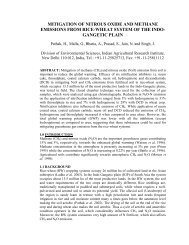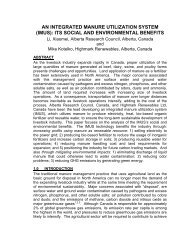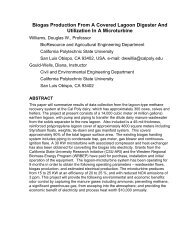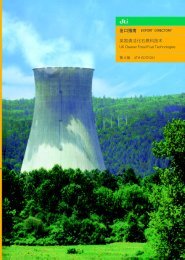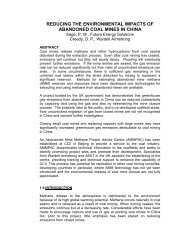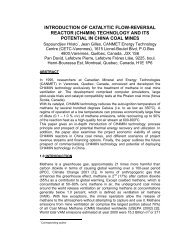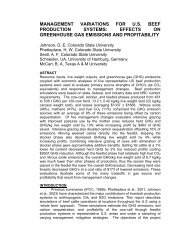identifying natural gas leaks to the atmosphere with optical imaging
identifying natural gas leaks to the atmosphere with optical imaging
identifying natural gas leaks to the atmosphere with optical imaging
Create successful ePaper yourself
Turn your PDF publications into a flip-book with our unique Google optimized e-Paper software.
currently underway <strong>to</strong> begin long-term testing of <strong>the</strong> BAGI technology athydrocarbon facilities. The technology offers a means <strong>to</strong> overcome cost andefficiency issues at facilities where hundreds or thousands of components are <strong>to</strong>be moni<strong>to</strong>red. An important next-step in research is a means <strong>to</strong> quantify <strong>the</strong>mass rate of detected <strong>leaks</strong>. The future of <strong>optical</strong> <strong>imaging</strong> appears promising.As <strong>with</strong> o<strong>the</strong>r video technologies, more usage and time will lead <strong>to</strong> more efficientand less expensive methane leak detection and repair.REFERENCES[1] McRae, T. G. and Kulp, T. G., “Backscatter Absorption Gas Imaging: a NewTechnique for Gas Visualization” Applied Optics, 1993, Vol. 32, 4037-4050[2] Pacific Advanced Technology, “Sherlock Gas Leak Detection Camera,” SantaYnez, CA, 2003[3] U.S. EPA Natural Gas STAR Program, PRC International, Gas ResearchInstitute, “Cost Effective Leak Mitigation at Natural Gas TransmissionCompressor Stations,” 1999[4] U.S. EPA, Gas Technology Institute, Clears<strong>to</strong>ne Engineering, Inc.“Identification And Evaluation Of Opportunities To Reduce Methane Losses AtFour Gas Processing Plants (USEPA Grant No: 827754-01-0),” Washing<strong>to</strong>n,DC, March 2000





